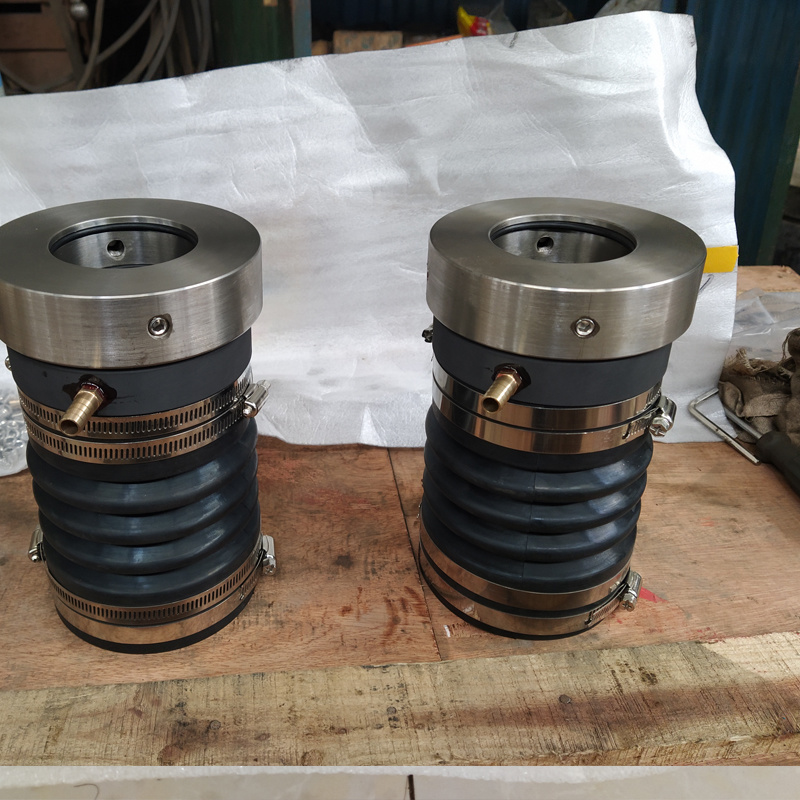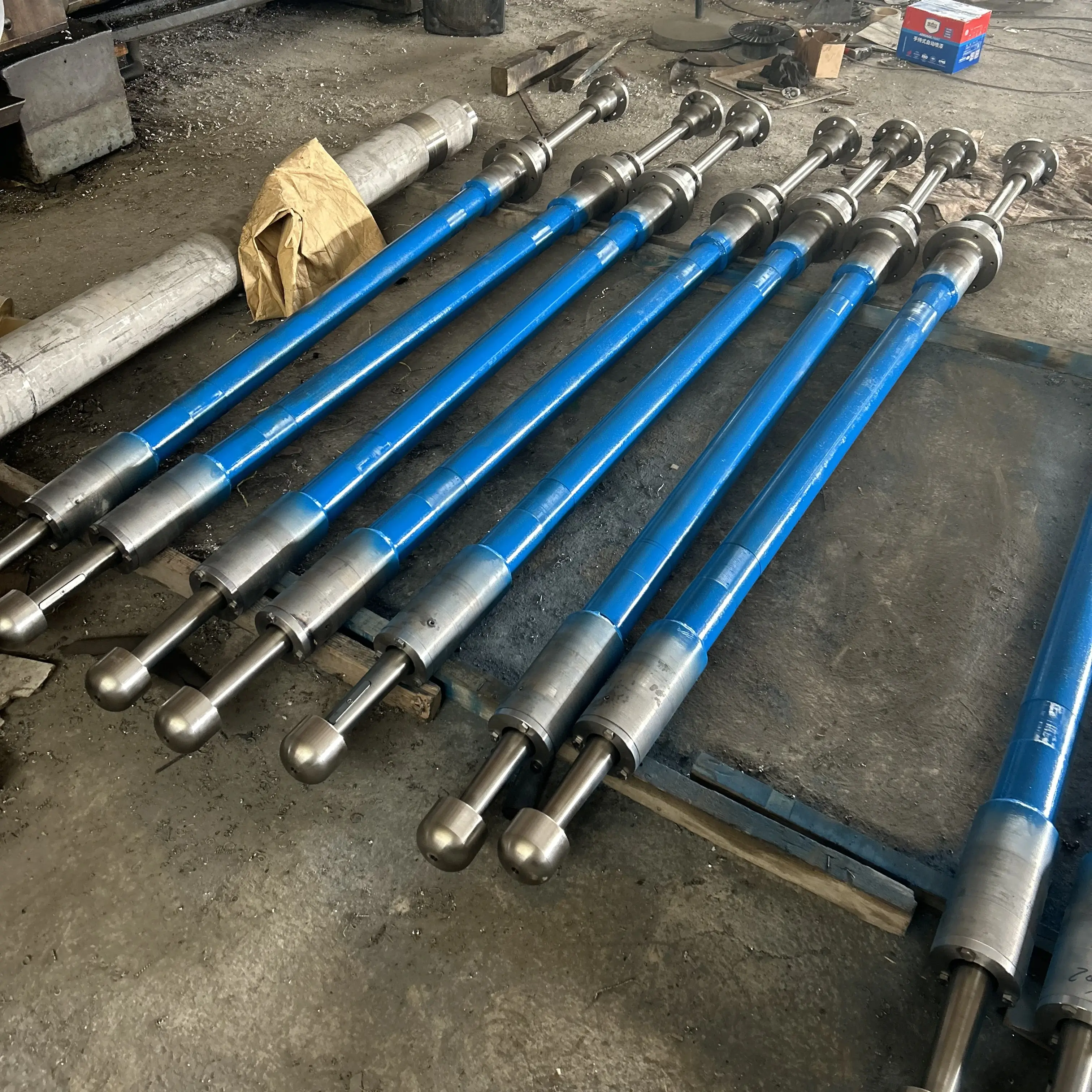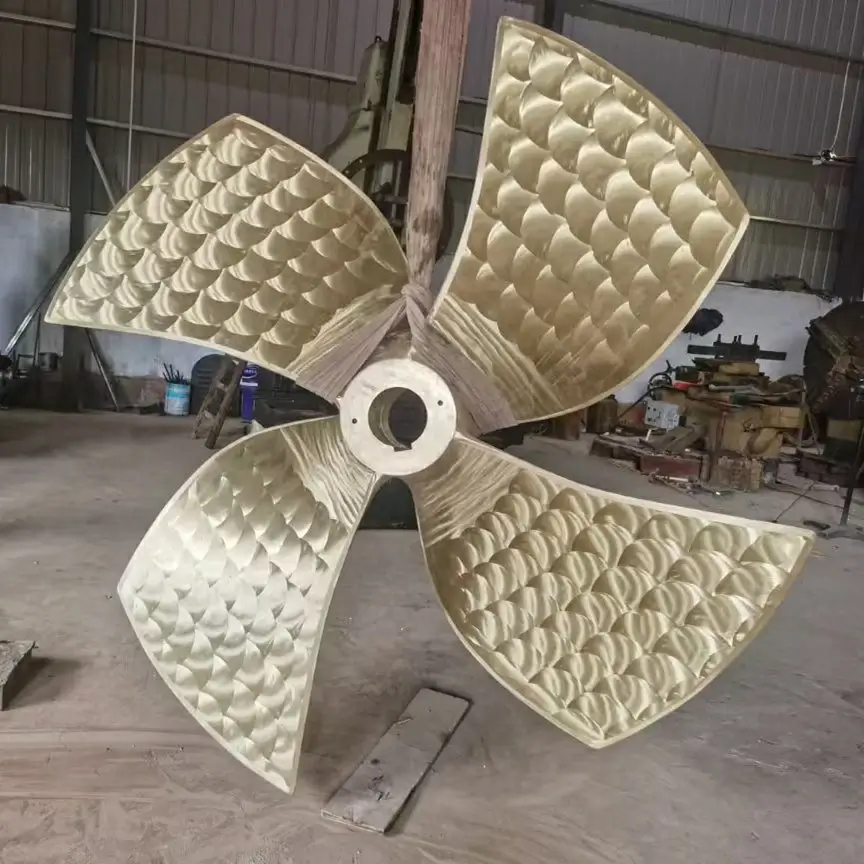The main types of ship propellers
Release Time:
Aug 13,2025
The propeller of a ship is the core component of the ship's propulsion system. There are various types of propellers, and different types of propellers have significant differences in structure, performance and applicable scenarios.
The propeller of a ship is the core component of the ship's propulsion system. There are various types of propellers, and different types of propellers have significant differences in structure, performance and applicable scenarios. The following are the main types of ship propellers:
I. Classification by the number of leaves
Single-blade propellers: They have a simple structure, few blades, and relatively low resistance, but their propulsion efficiency is low and their balance is poor. They are only occasionally used in some special small ships (such as certain speedboat models).
Double-blade propeller: It has two blades and a relatively simple structure. It is suitable for small ships that do not have high requirements for propulsion efficiency but need lightweight design, such as some small fishing boats and workboats.
Three-blade propeller: One of the most common types, with three blades. It achieves a good balance among promoting efficiency, balance and structural strength, and is widely applied to various small and medium-sized ships, such as cargo ships, passenger ships and yachts.
Four-blade and multi-blade propellers: The number of blades is 4 or more (such as 5 or 6). The multi-blade design can provide greater thrust, with less vibration and lower noise during operation. It is suitable for ships with high requirements for stability and quietness, such as large cruise ships, military vessels, and research vessels.
Ii. Classification by blade shape
Equal-pitch propeller: The pitch at each radius of the blade (the theoretical distance the propeller advances one week before it rotates) is equal. It has a simple structure and is easy to manufacture, but its propulsion efficiency is relatively low under non-design conditions (such as when the ship is accelerating, decelerating or turning), making it suitable for ships with relatively stable working conditions.
Variable pitch propeller: The pitch varies at different radii on the blade, usually gradually increasing from the blade root to the blade tip. It can maintain a high propulsion efficiency within a wide range of working conditions, adapt to different speeds and load changes of ships, and is widely used in ships that need to frequently adjust working conditions, such as tugboats and ferries.
Adjustable pitch propeller (CPP) : The blade Angle can be adjusted through a mechanical device, thereby changing the pitch size. The ship can move forward, backward or stop without changing the rotation direction of the main engine. It is flexible to operate and can optimize the propulsion efficiency under different working conditions. It is often used for ships that need to change direction frequently, such as port tugboats, icebreakers and military vessels.
Iii. Classification by Structural Form
Integral propeller: The blades and hub are an integral part (usually made by casting or forging), with high structural strength, suitable for large ships and high-load working conditions, such as the propellers of ocean-going cargo ships.
Combined propeller: The blades and hub are assembled through bolts and other connecting parts, which is convenient for replacing damaged blades and has a relatively low maintenance cost. It is suitable for scenarios where blade wear or collision is prone to occur, such as inland river vessels and nearshore operation vessels.
Iv. Special Function propellers
Duct propeller: By installing a guide pipe (duct) on the outside of the propeller, it can enhance the propulsion efficiency (especially under low-speed and high-thrust conditions) and reduce water flow disturbance. It is suitable for vessels such as tugboats, pusher boats, and submarines that require high thrust.
Counter-rotating propellers: Composed of two coaxial propellers rotating in opposite directions, they can counteract the torsional moment generated by a single propeller, reduce ship vibration, and improve propulsion efficiency. They are commonly found in high-performance ships, large cruise ships, etc.
Side-thrust propellers: Installed on the sides of the bow or stern of a vessel, they are used to adjust the vessel's course at low speeds or during berthing, enhancing maneuverability (maneuverability refers to the vessel's maneuverability), and are widely applied in large ships, port operation vessels, etc.
Anti-entanglement propellers: Through special structures (such as blades and protective nets), they reduce the entanglement of water plants, ropes and other debris on the blades. They are suitable for ships in inland rivers, lakes and other waters, such as fishing boats and sightseeing boats.
Different types of propeller designs are all tailored to specific navigation requirements (such as speed, thrust, stability, environmental adaptability, etc.). When making a selection, a comprehensive consideration should be given to the type of vessel, operational scenarios, and performance requirements.
Keywords:





